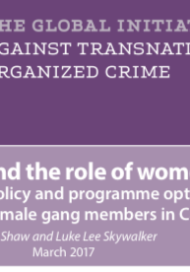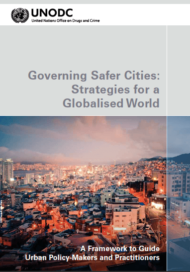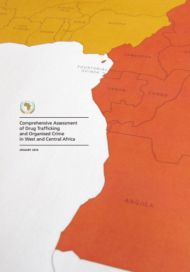Posted on 16 Apr 2018
Unlike much of the existing literature on organised crime, this book is less focused on the problem per se as it is on understanding its implications. The latter, especially in fragile and conflict regions, amount to strategic challenges for the state. Whereas most commentators would agree that criminal activities are harmful, this volume addresses the questions of ‘how?’, ‘for whom?’ and, controversially, ‘are they always harmful?’
In a collaboration by five Global Initiative Network Members, this Palgrave book edited by Virginia Comolli examines contemporary organised crime threats, and how they need to be handled by policymakers keen to limit the harm of illicit markets.
In the opening chapter, Vanda Felbab-Brown, The threat of illicit economies and the complex relations with state and society, introduces the multifaceted threat posed by illicit economies and repercussions in the political, economic, environmental and security spheres. It discusses the relationship between the state and criminal entities, highlighting the ways in which this relationship can be far from antagonistic. It explores the relationship between society and crime, suggesting that large populations around the world in areas with inadequate or problematic state presence, great poverty, and social and political marginalisation are dependent on illicit economies for economic survival and the satisfaction of other socio-economic needs. In this context criminal and belligerent actors become providers of public goods.
The second chapter, by Tuesday Reitano, Organized crime as a threat to sustainable development: understanding the evidence, highlights the main arguments for a development response to organised crime, to mitigating its impact on vulnerable communities and the integrity of the state, and to building long-term resilience to counter organised crime in the future. Specifically, it discussed the evidence base of organised crime’s impact vis-a-vis four core development areas: health and wellbeing; violence and conflict; governance and the rule of law; livelihoods and the environment.
The third chapter, by Camino Kavanagh, IT and cyber-capabilities as a force multiplier for transnational crime, provides an historical overview of the evolution of criminal use of IT capabilities as a force multiplier, highlighting a number of emblematic cases. It then assesses the more recent uses of IT and cyber capabilities, while the third asses the strategic and policy implications of transnational crime’s use of these capabilities.
The fourth chapter, by Karl Lallerstedt, Measuring illicit trade and its wider impact, reviews the broad and varied collection of phenomena requiring a broad palette of coordinated policy responses. But unlike the threat of terrorism, which produces highly visible incidents, most of the times illicit trade remains below the surface, impeding the mobilisation of the pre-requisite political will to address the threat. These challenges underline the need for better data to quantify and assess the impact of illicit trade, in order to empower policymakers to respond more effectively.
In the final two chapters, Tuesday and Vanda explore the practical implications for the response. It challenges the doctrinaire law enforcement approaches and the traditional thinking of crime solely as an aberrant social activity to be suppressed. Instead it proposes the way that development initiatives should be considered in response to transnational organised crime, including the means in which they should be measured, and how an integrated approach should be conceived and implemented.
The book is available in hardback and electronic versions, with individual chapters available for purchase from Palgrave.




